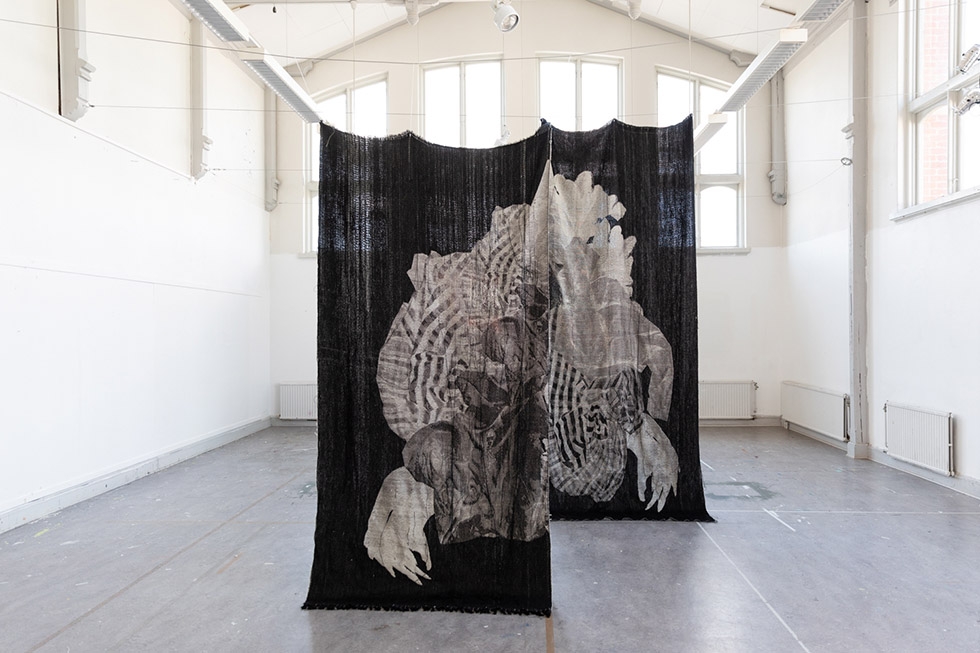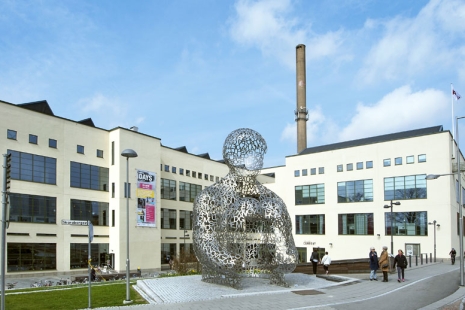In “När rötter bränns” works by nine contemporary textile artists are shown, which together with audio and visual material from the Textile Museum’s archives create a dialogue between contemporary artists and the museum’s rich history. The exhibition relates to the place Sjuhäradsbygden and the Västra Götaland region – a place that textile knowledge, materials and roots have migrated to but also from . It is an investigation of the significance of textiles for the history, identity, origin, home, belonging and the deceitfulness of memories. Here are stories of a wide variety – from nineteenth-century transatlantic cotton imports, to twentieth-century labor immigration, and the late twentieth-century export of design ideas with production in textile industries around the world. We get to see textiles as a material in constant motion, with roots and stories from all over the world
With the exhibition title, the curators Åsa Dybwad Norman and Frida Hållander draw parallels to the fact that large amounts of textiles are today discarded and burned up: from the wool of the Swedish grazing sheep, to unsellable garments from the global textile industry. The feeling of fire can be seen as that something is perceived as important and urgent, that it burns. From the ashes the question arises: What happens when roots are burned?





